The exhibition area is conceived on the lowerlevel -3.00 and its void rises into the foyer. Therefore thisimportant part of the ensemble can be experienced on the publiclevel, both from inside as well as from outside, as visitors comingfrom the Osterwiese are given a view into this part of the buildingthrough a glass front.
Culture and Congress Centre
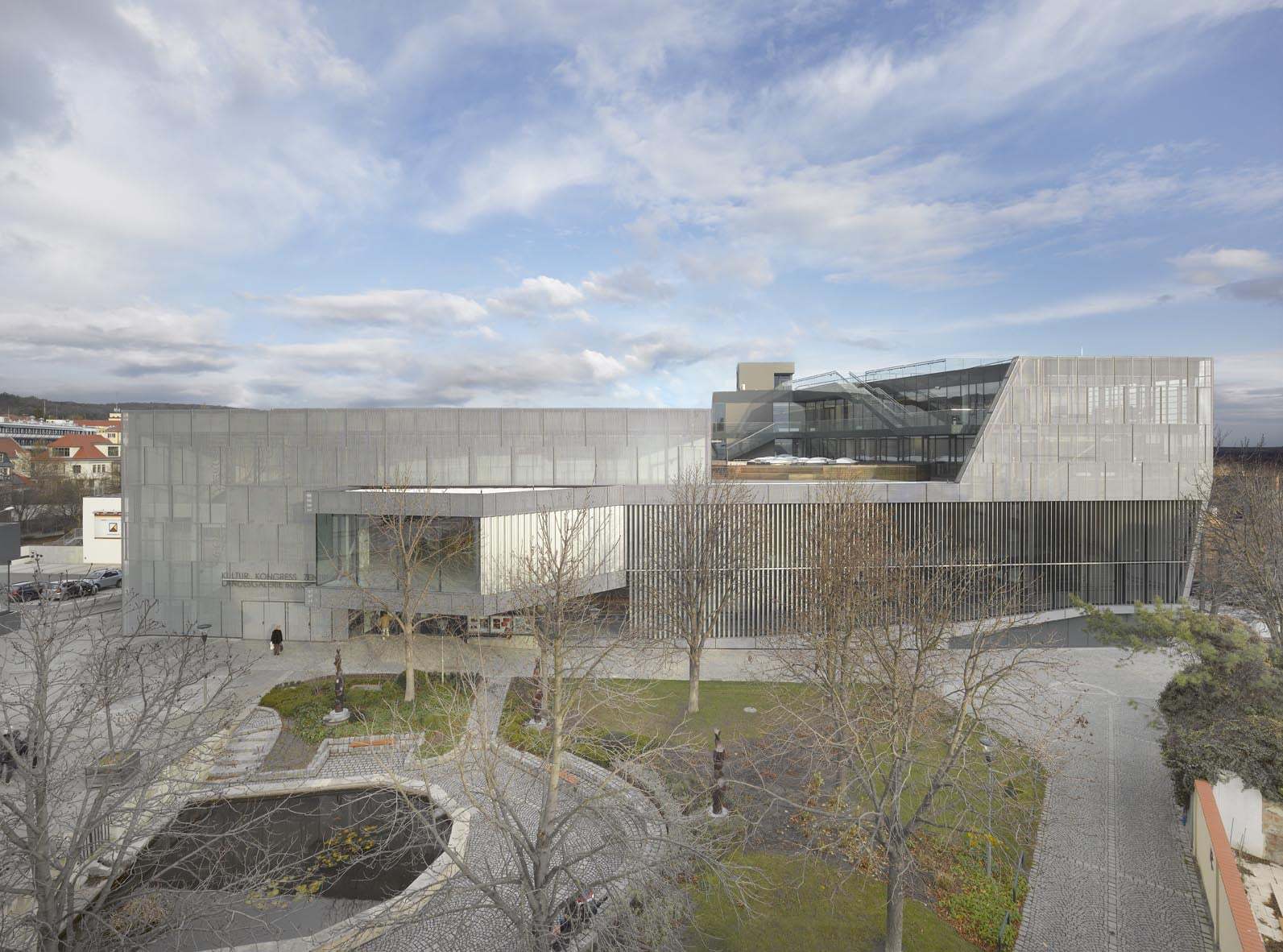
The present project is conceived as, externally,an apparently single entity by spanning a perforated shell aroundlarge parts of the extension and the existing building.
Year
2009
Venue
Eisenstadt
State
Completed
Category
Culture
Size
10.933 m²
Year |
Venue |
State |
Category |
Size |
|---|---|---|---|---|
2009 |
Eisenstadt |
Completed |
Culture |
10.933 m² |
Year
2009
Venue
Eisenstadt
State
Completed
Category
Culture
Size
10.933 m²
Although this design approach articulates thecompactness of the building complex, on the other hand clearreferences to the urban context are also made. The larger part of thevolume is concentrated in the direct connection to the existing andthen steps down to the small-scale structure to the southeast of theplanning area. The stepping heights help give this part of the townenough light and air, while the mass tends more to respond to thelarge scale of the Osterwiese.
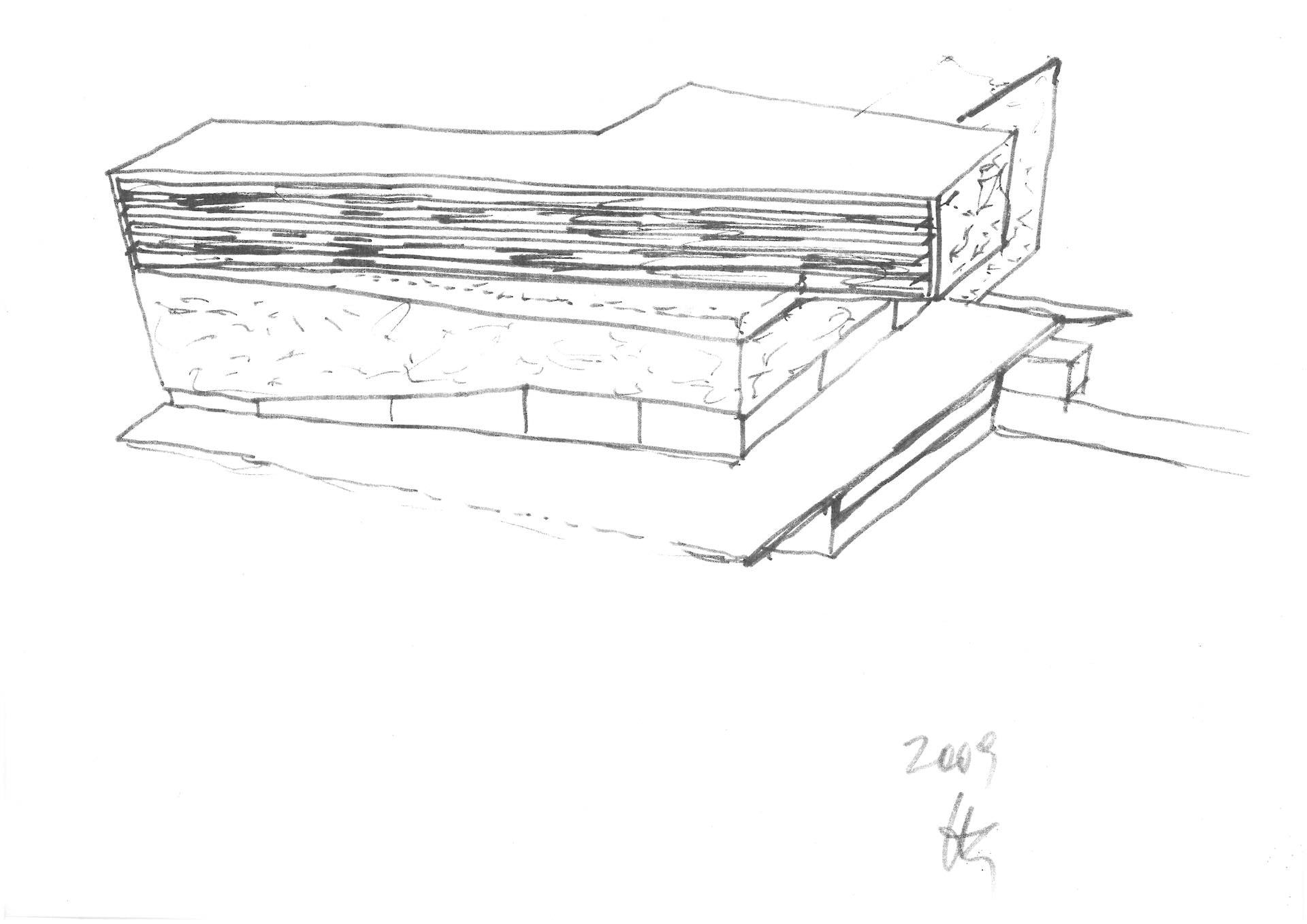
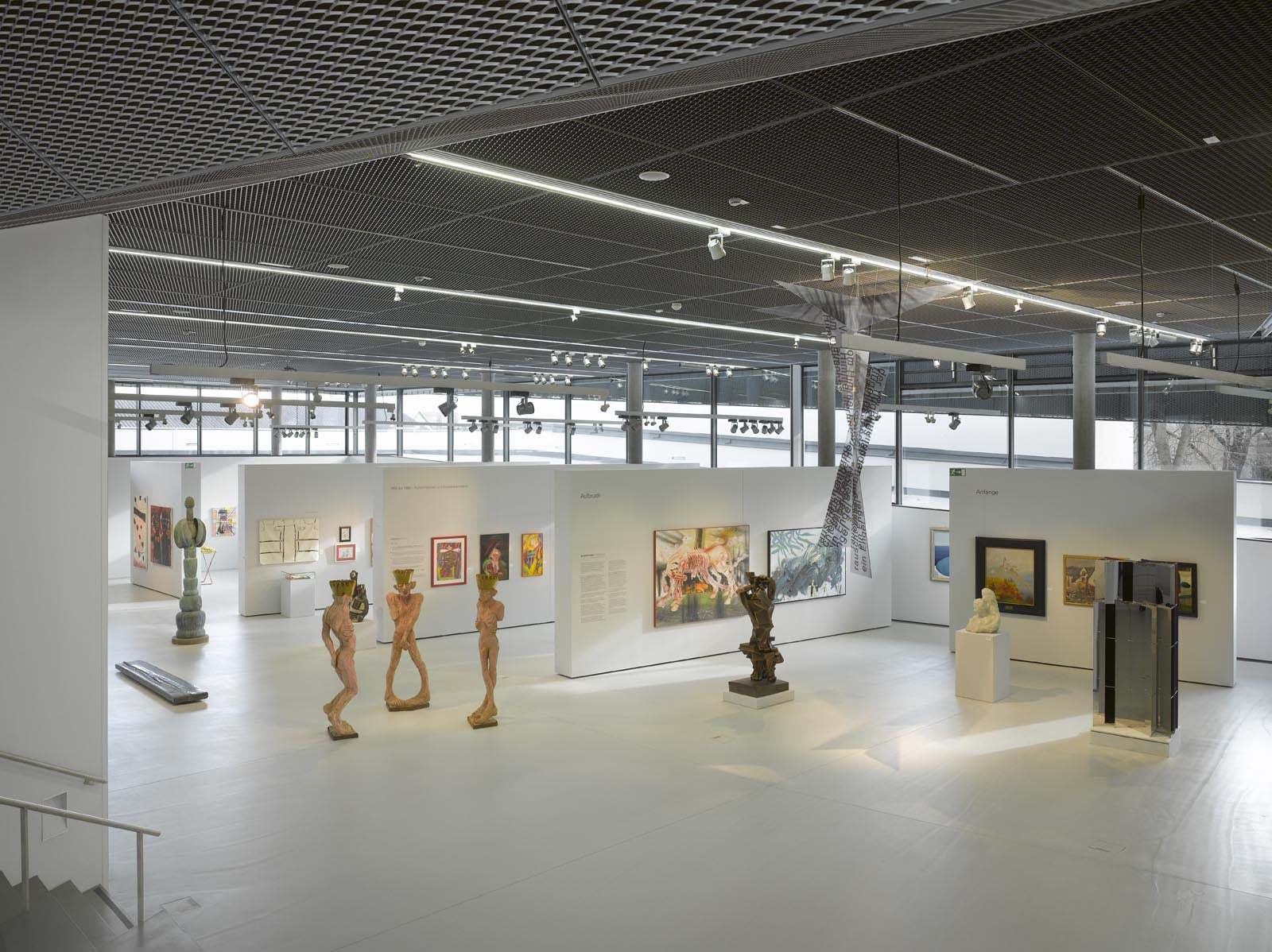
A generously dimensioned landscape of steps,resembling an auditorium, guides visitors with an inviting gestureinto the exhibition area, which is divided into two main zones:permanent exhibition and visiting or temporary exhibitions. The twoareas can be separated from each other, functionally and in terms ofroom climate, in order to meet the needs of each.
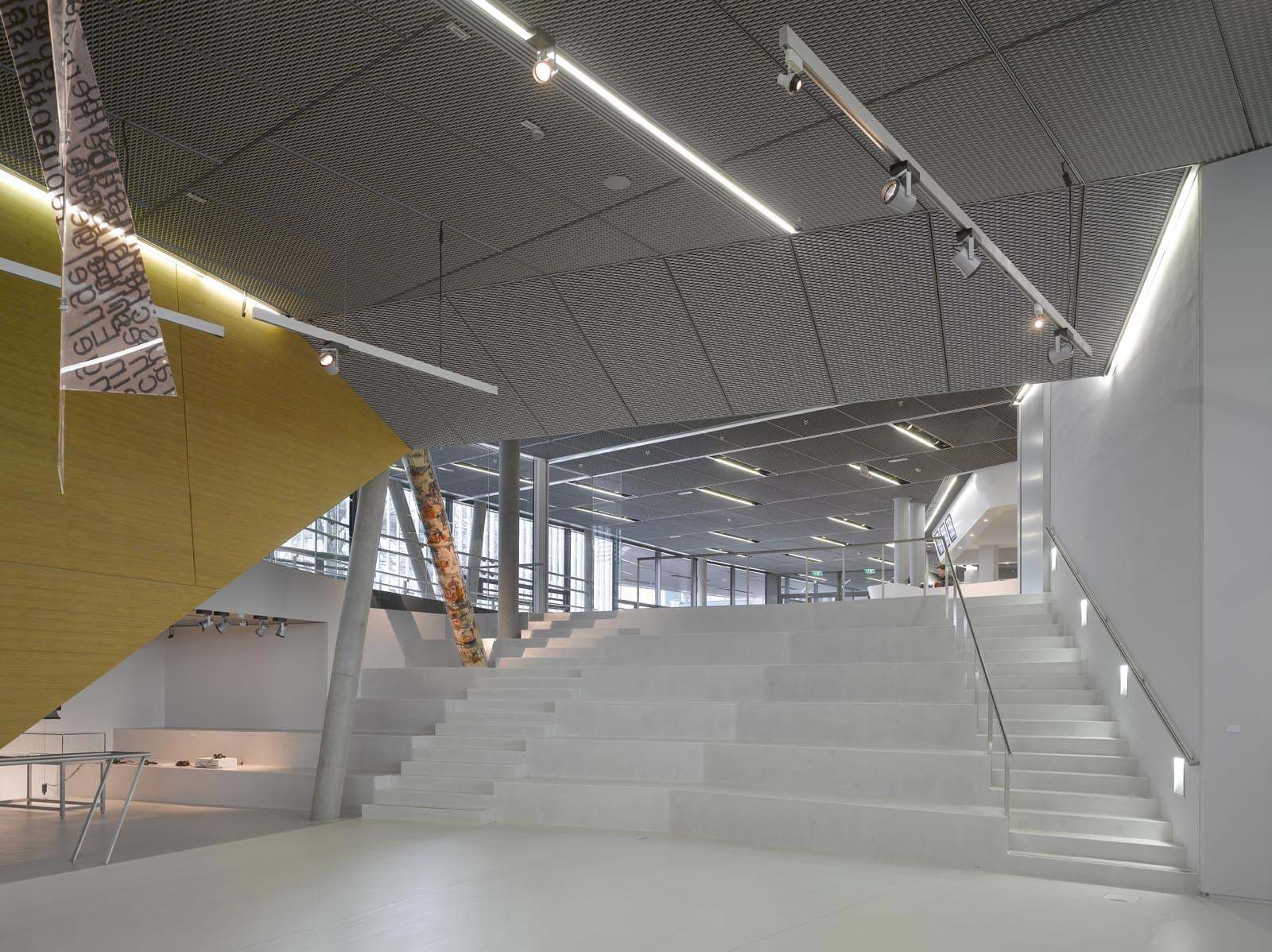
From the foyer visitors to events are led viaseveral access staircases to the upper floor. The unbundling of thecirculation results in a good distribution of the public, whichensures that the events area can be easily and efficiently reached.At the same time the public is distributed outside the halls and“washed” into the respective areas.
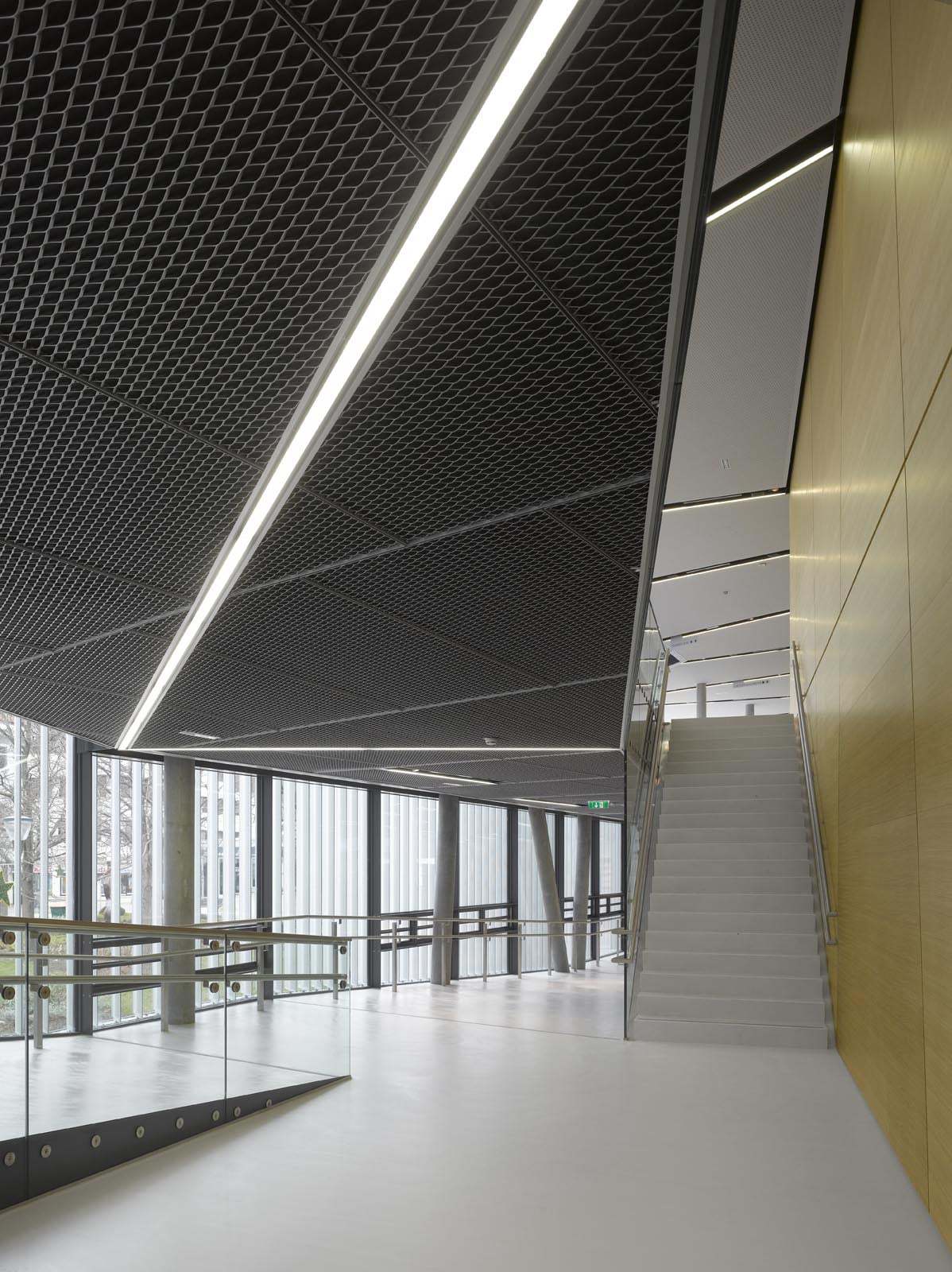

The entire exhibition zone can be separated fromthe other parts by means of a glass sliding wall and its room climatecan also be controlled separately. The exhibition area is flanked onboth sides by storage spaces, the administration offices of theLandesgalerie face onto Ostergassl. Deliveries to the Landesgalerieare made from Ostergassl through a roofed delivery yard that can belocked up.
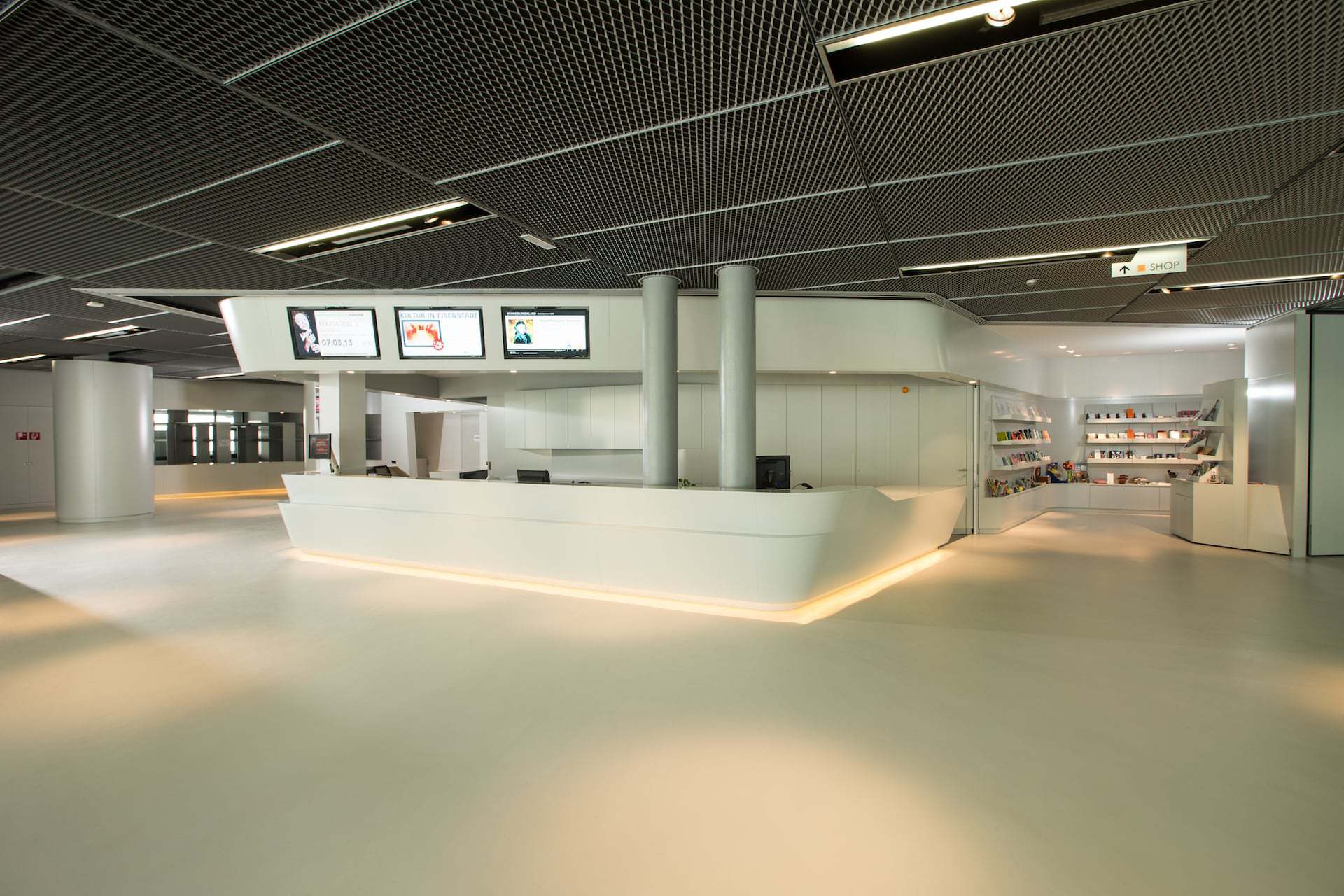
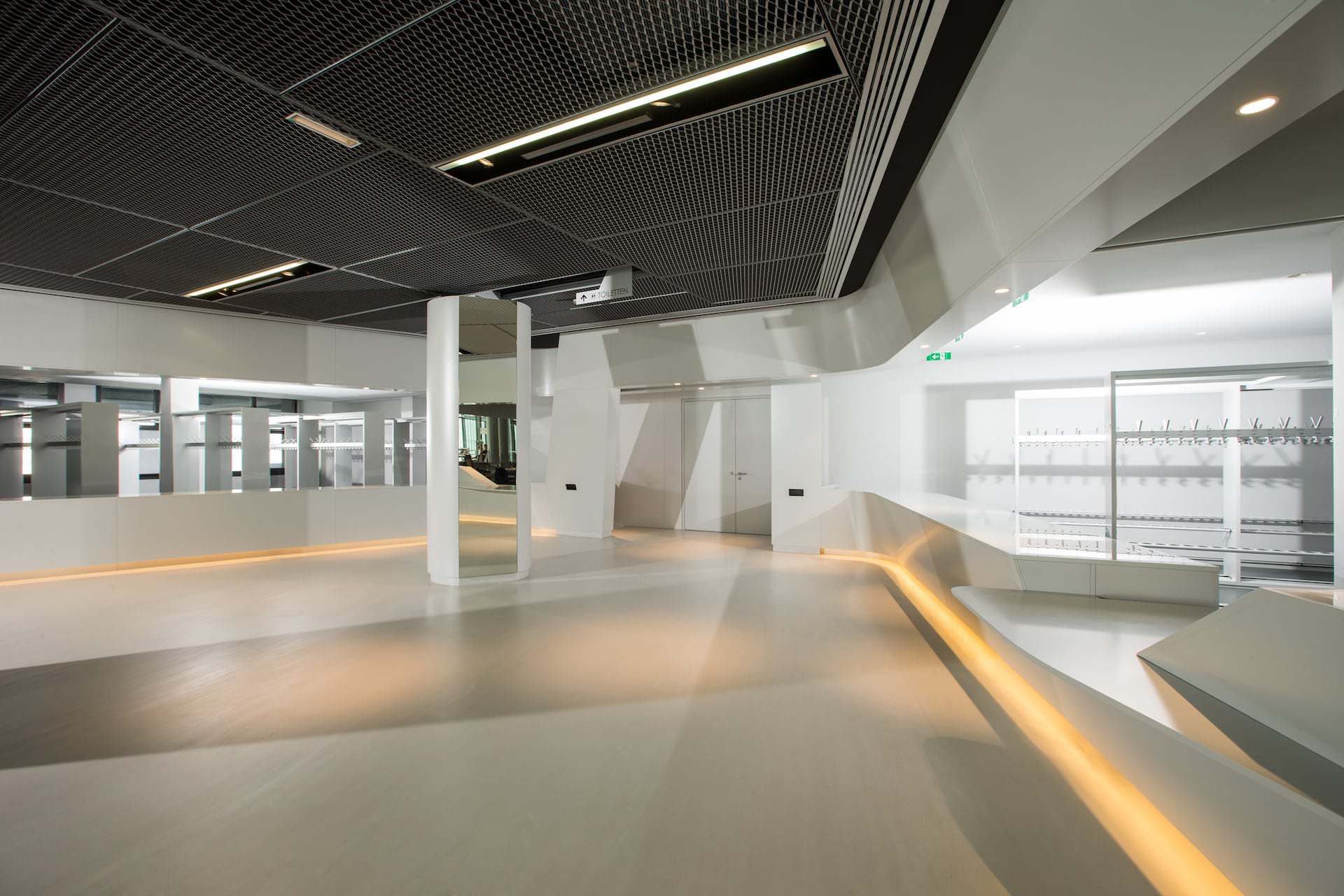
The existing large staircase is a part of thecirculation system, along with two new staircases and a lift. Fromthe angular foyeryou reach the respective halls from different positions. The figureof the large hall is preserved, the opening to the small hall is madein the south wall and extends across the entire width of the smallhall.
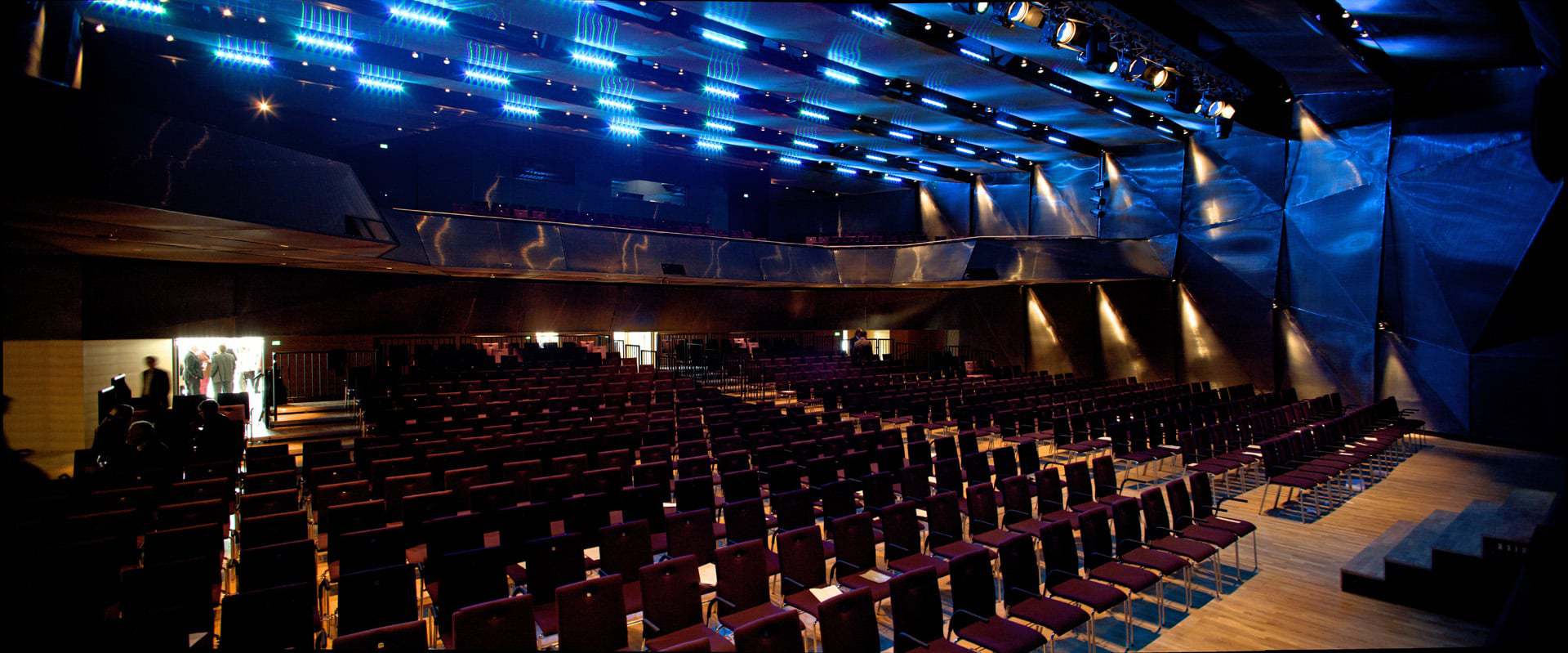
The small hall itself is laid out on a polygonalbasic figure, which is swivelled slightlyand produces a deeper visual effect across the diagonal of the largehall and thus indicates a certain direction towards the front stagearea of the large hall.
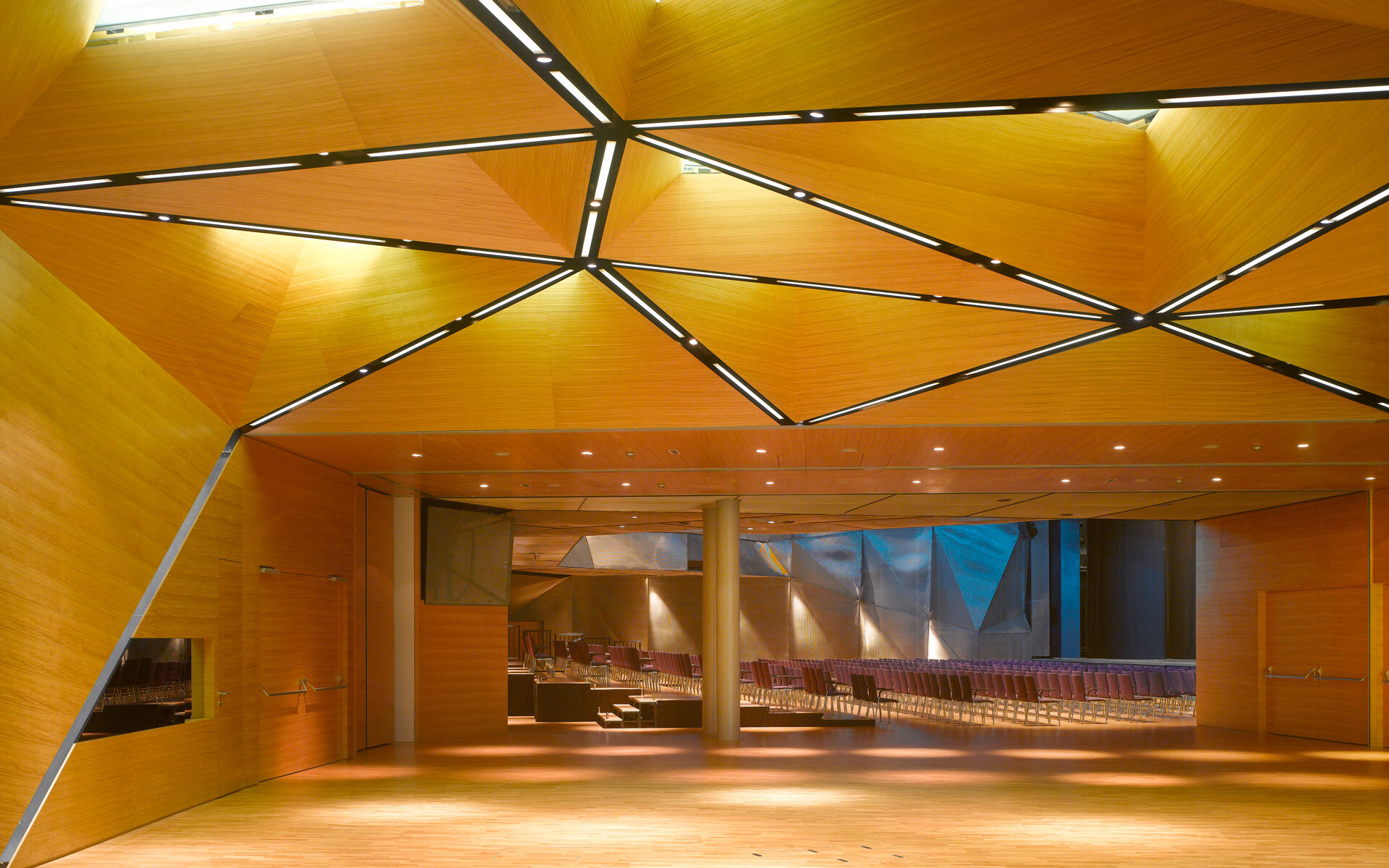
It is intended to make part of the partition wallto the foyer as a mobile wall, which would allow a larger opening tothe foyer/bar area, producing a large coherent events area. The smallhall has a glass rooflight through which it receives daylight –making it particularly suitable for conferences.
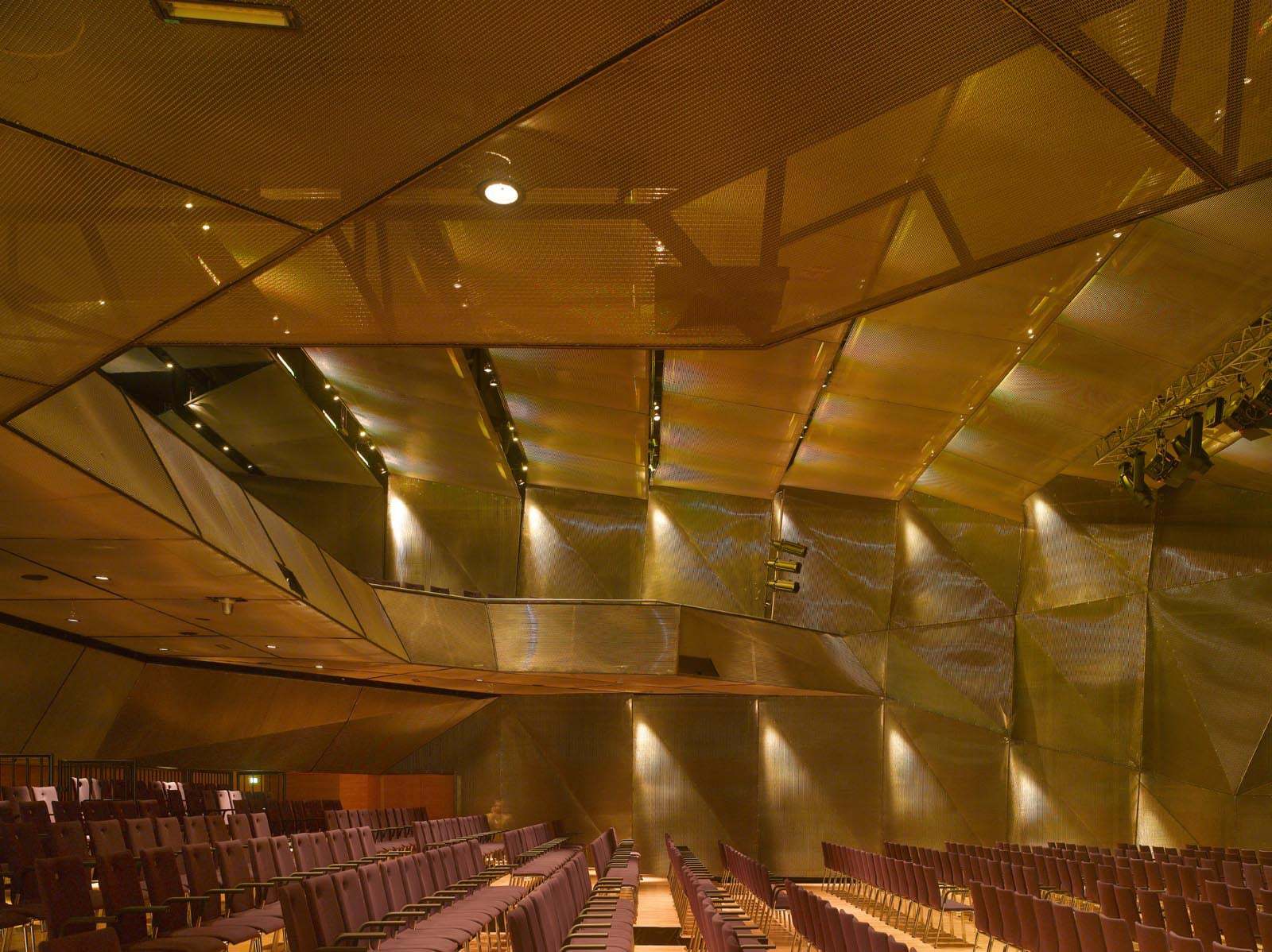
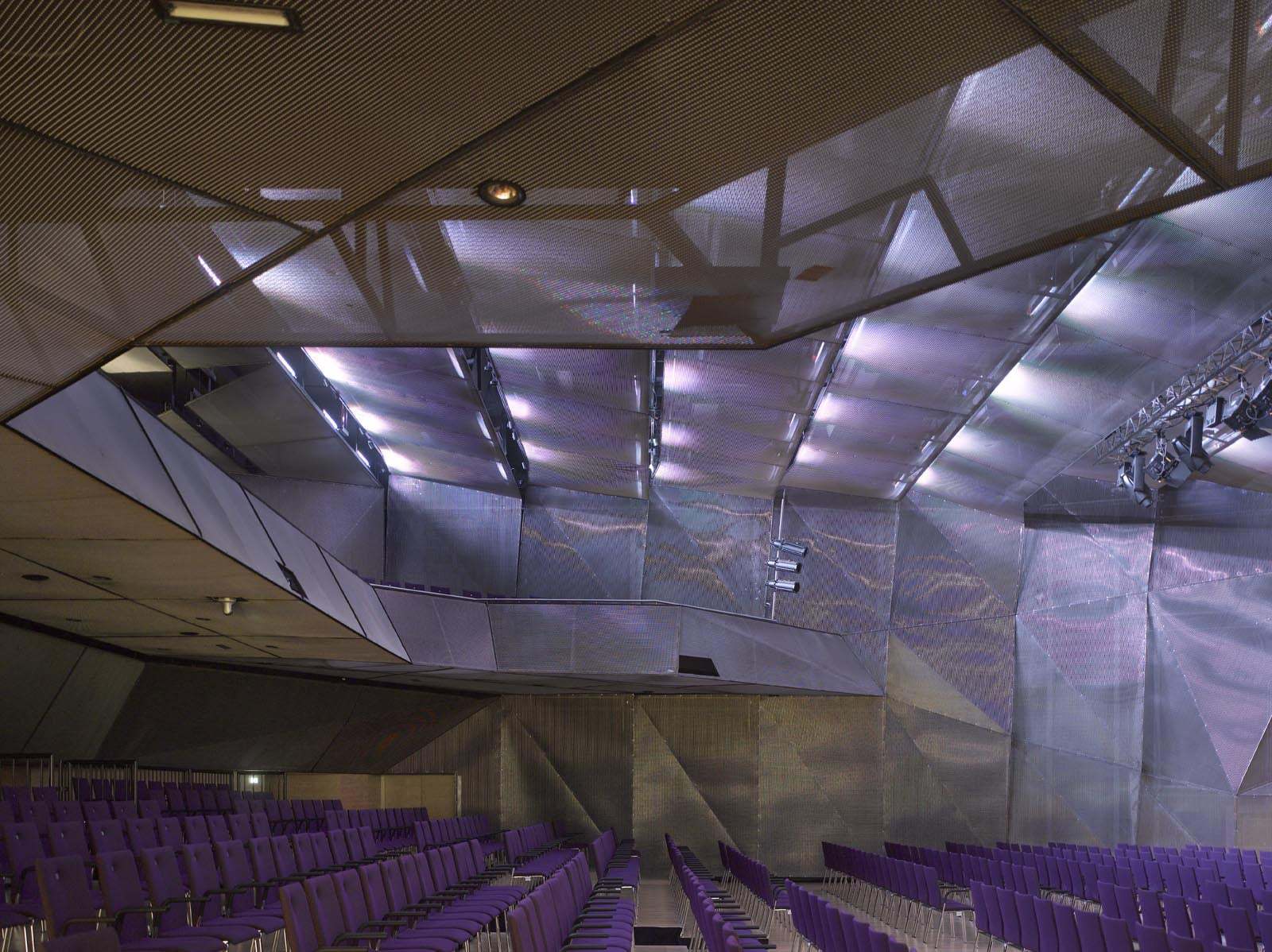
The external skin is made of perforated metal inthe form of a back ventilated facade. This metal skin extends in partacross the glazed areas allowing a moderated view outside. Mostimportantly this skin is stretched across the existing facades at acertain distance in front of them, like a screen. It generates thevisual unity of the entire ensemble and creates a new and elegantappearance without necessitating any major interventions in theexisting parts of the façade. This allows the existing facades to berenovated economically and without complications. To provideprotection from the sun, the large areas of glazing are given asystem of louvers – the office facades on the south side havehorizontal louvers to protect against the sun when it is high in thesky, while the east and west facades have vertical louvers againstthe lower angled sunshine in the mornings and afternoons.
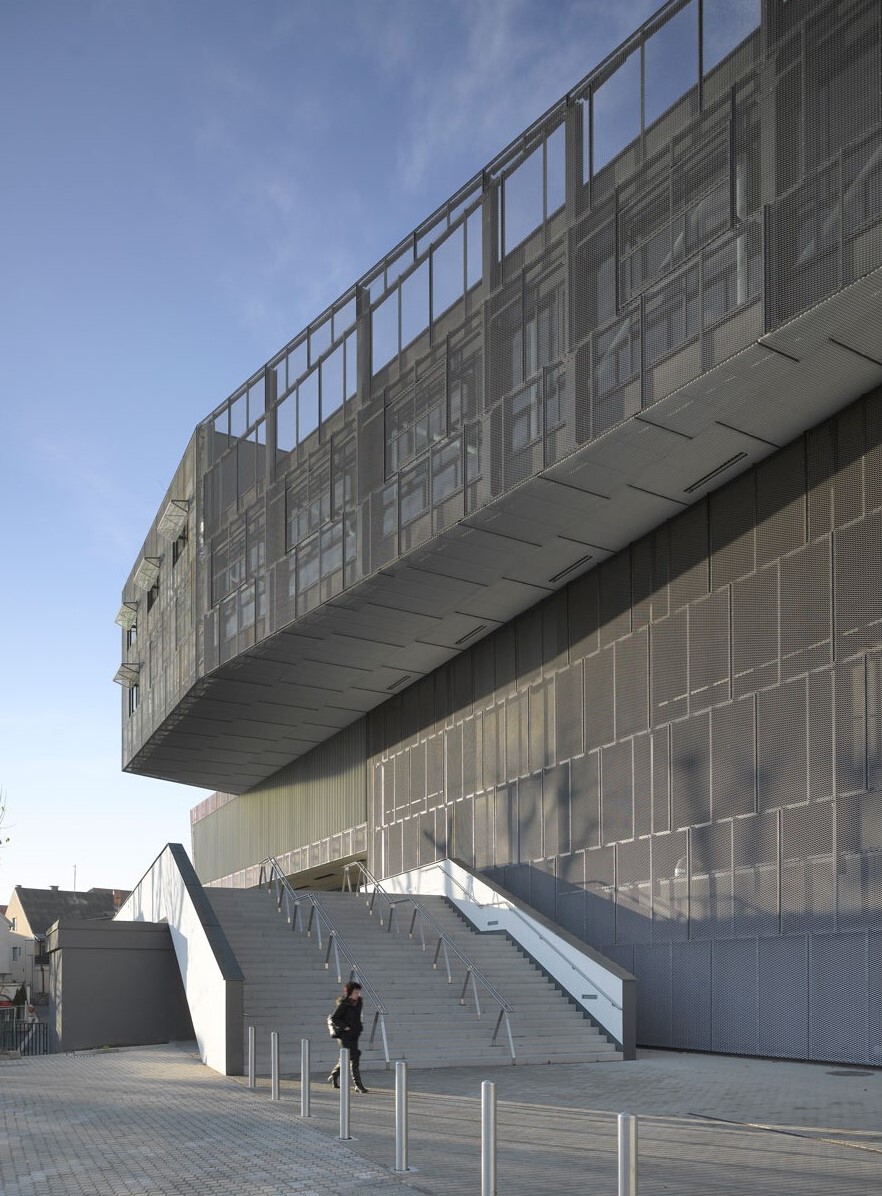
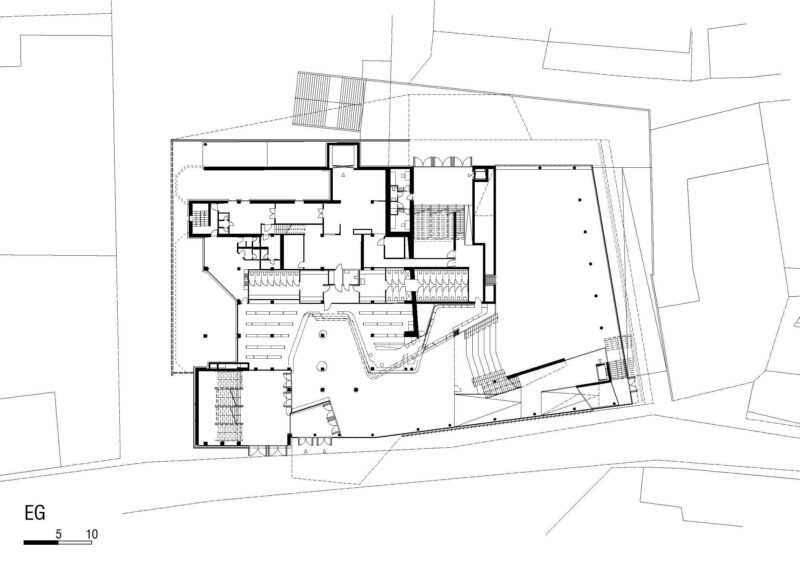
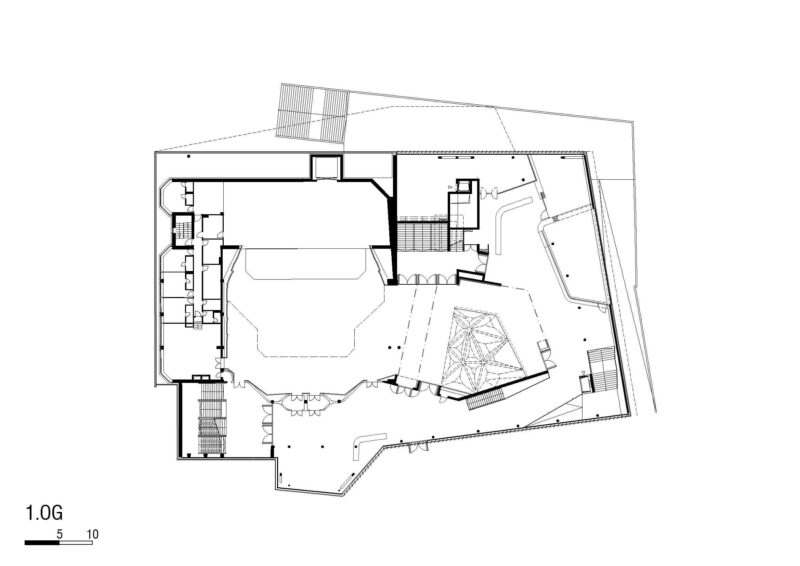
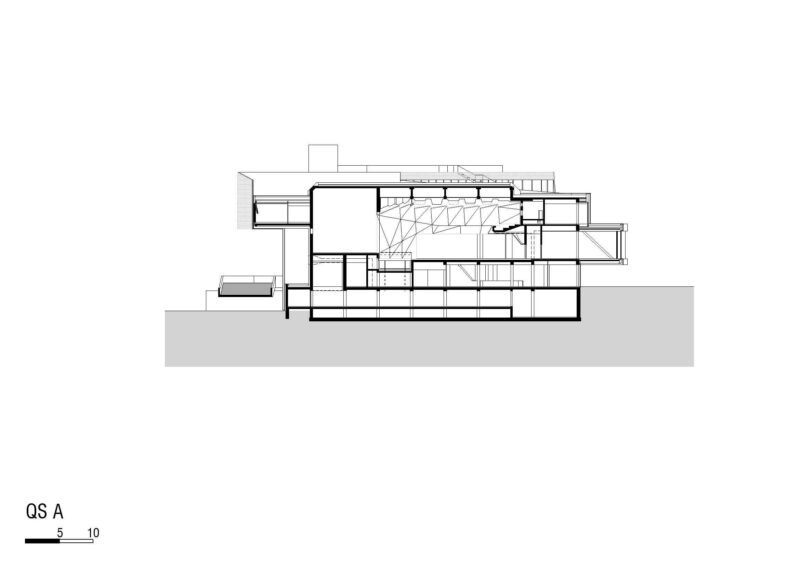
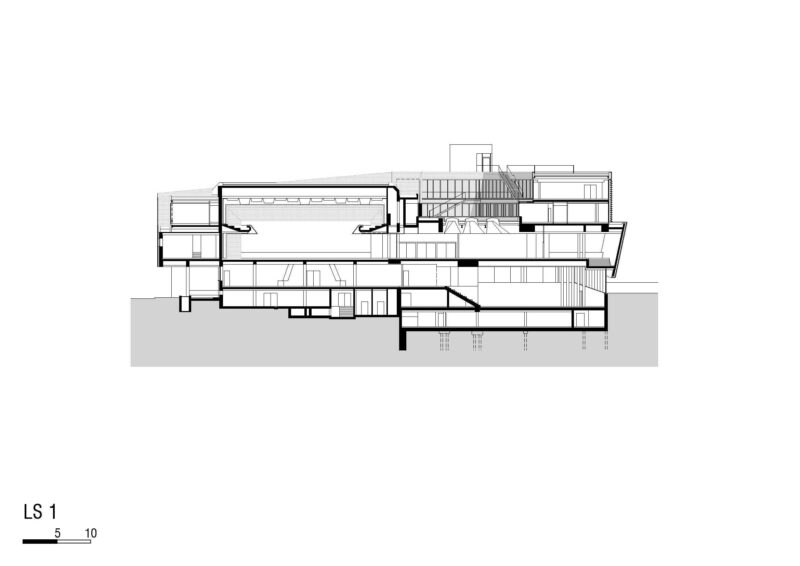
The two storeys above the hall level house theadministration areas with their groups of functional spaces. The areafor the State Governor is integrated in this group but has a specialquality as the result of its location. Situated at the striking edgeon Schubertplatz, it offers an all-round view of the surroundings. Inthe internal organisation a foyer with the adjoining meeting areas isinterconnected to the other units. The Governor’s office can bereached from the underground garage by a lift immediately beside it.
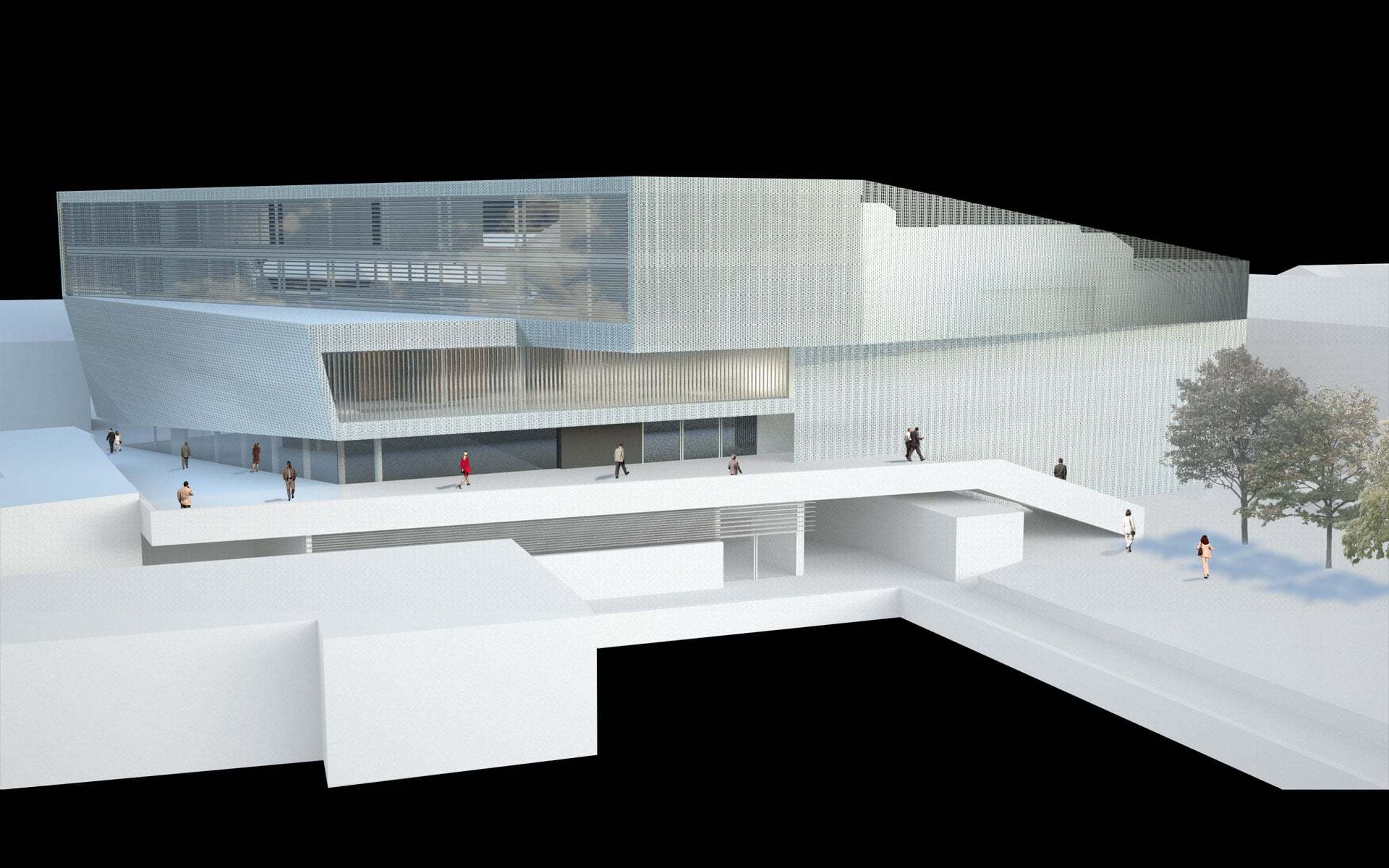
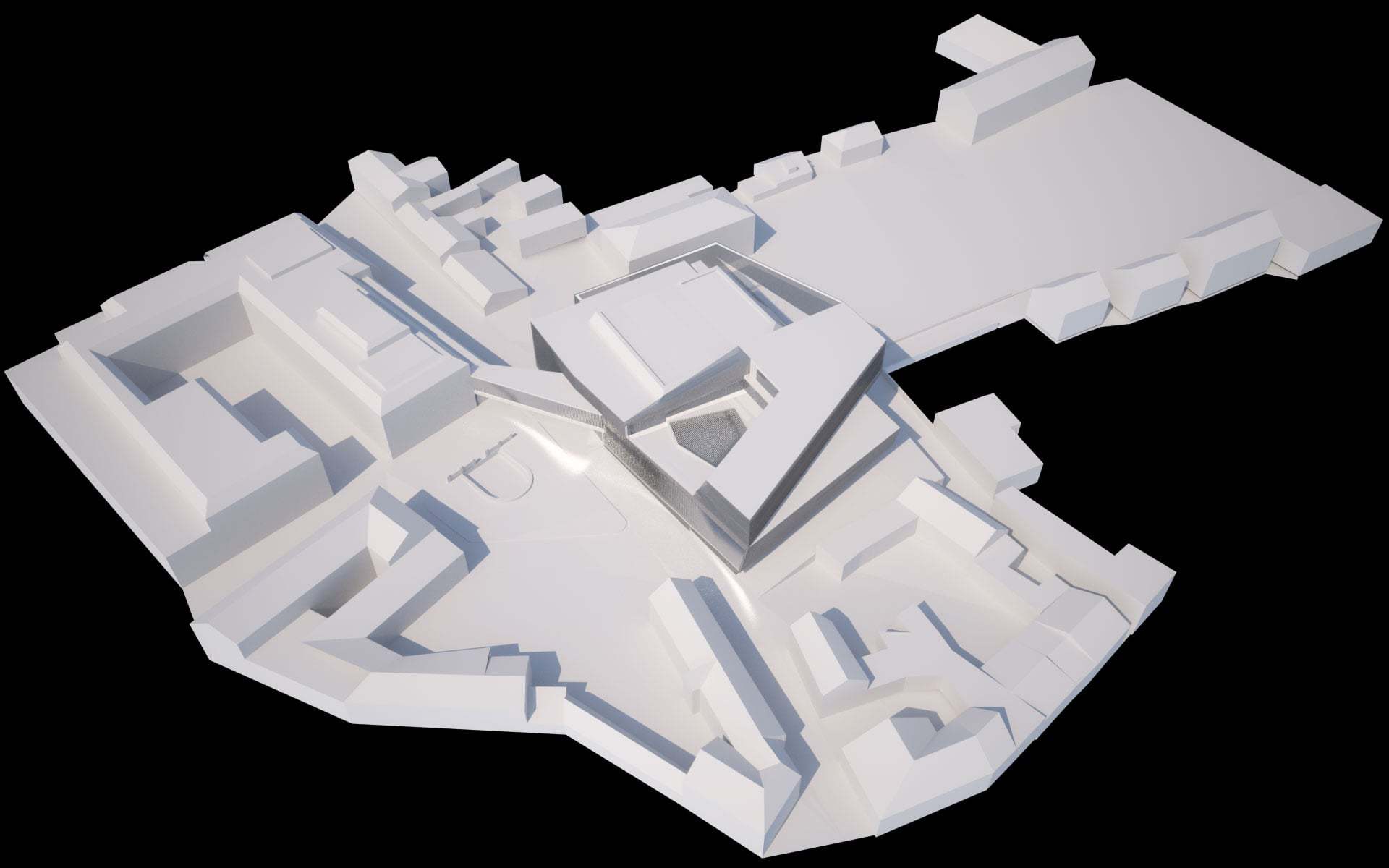
Both the extension as well as the adaptation workare carried out in reinforced concrete in accordance with thestructural concept. A perforated metal skin in the form of a backventilated facade is planned as the building’s external envelope.This metal skin also extends in places across the existing facades,at a certain distance from them, like a screen. It generates thevisual unity of the entire ensemble and creates a new and elegantappearance without making any major interventions in the existingfacades.
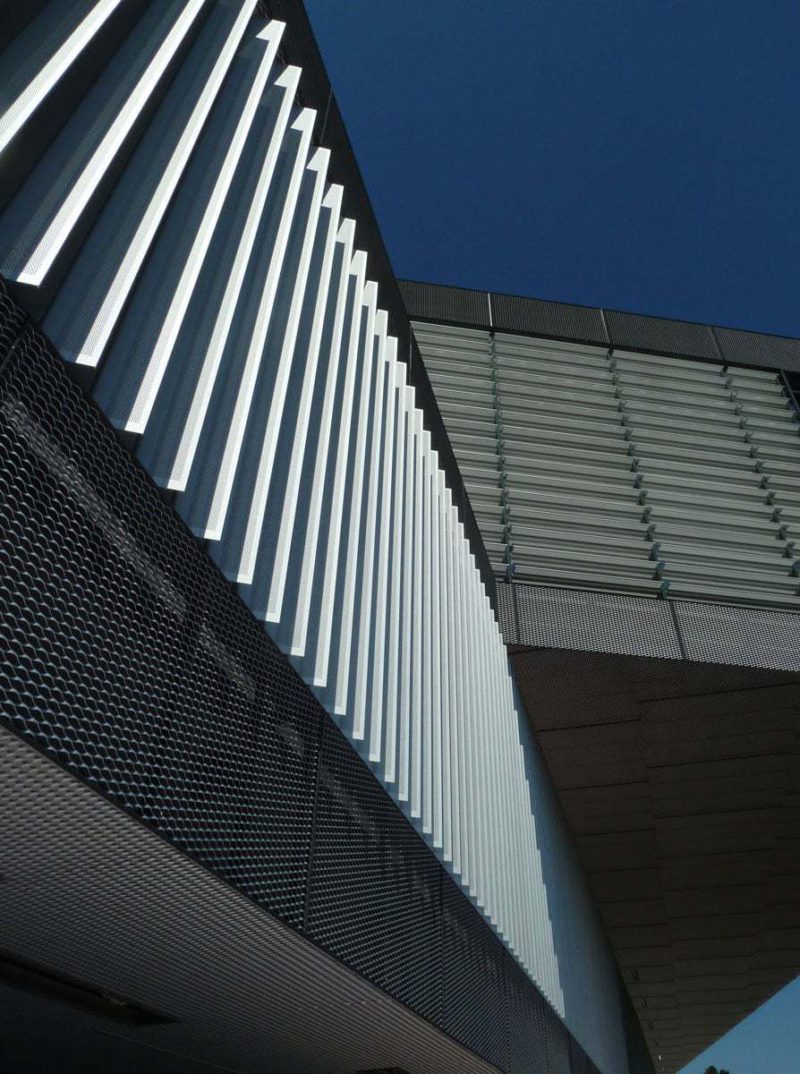
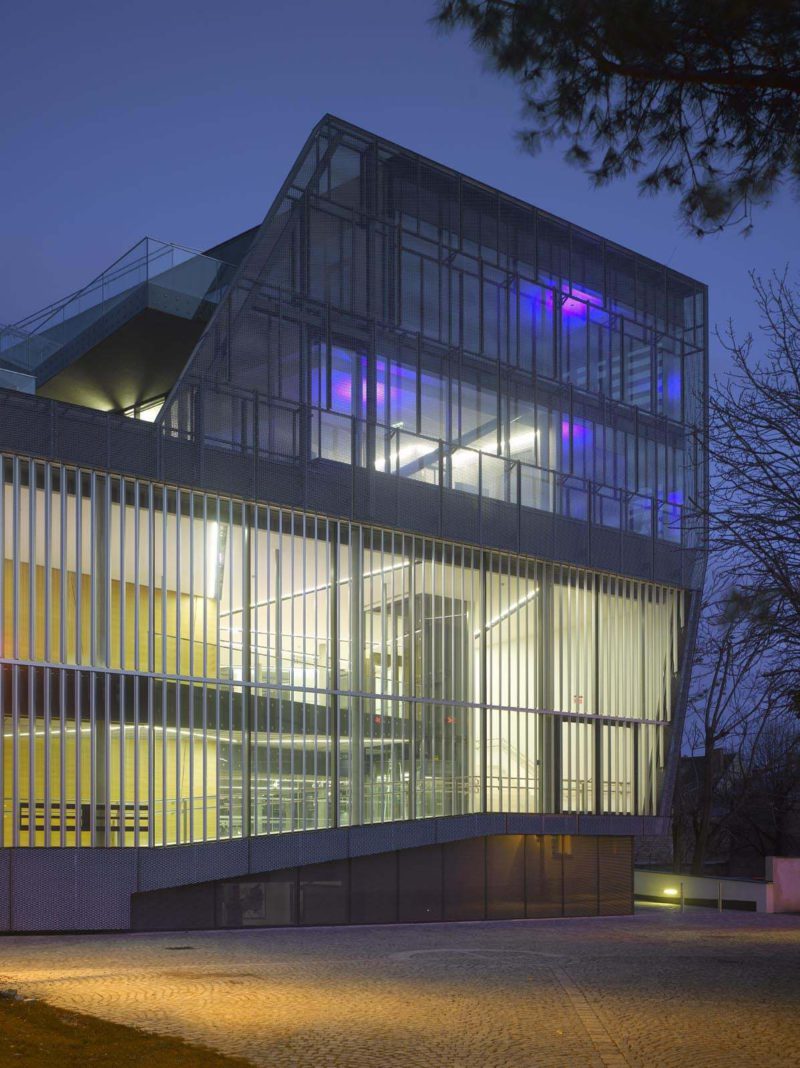
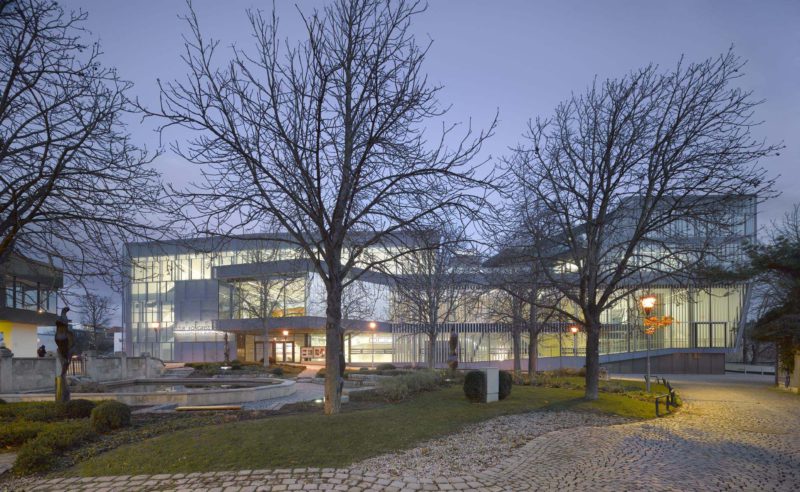
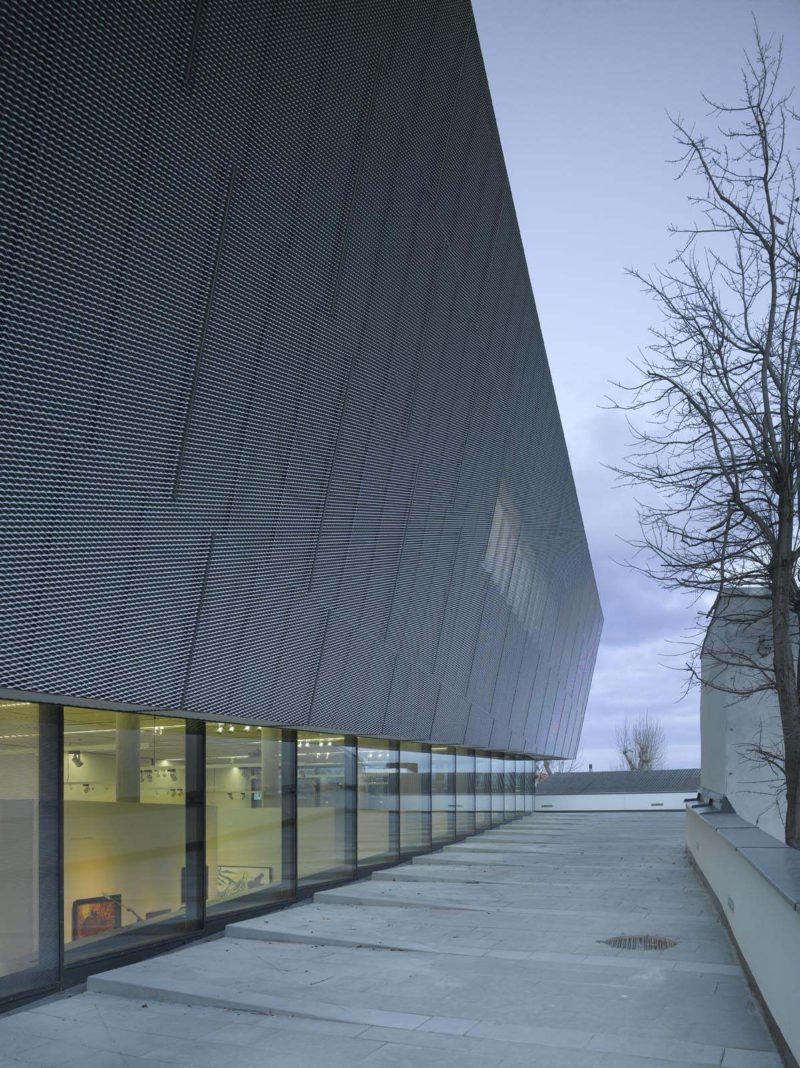
Architecture
Pichler & Traupmann Architects
Design team
Christoph Degendorfer
Mario Gasser
Samuel Kegele
Milan Suchánek
Project team
Barbara Aull (project leader)
Neda Afazel
Fabio Miguel Cunha
Relana Hense
Samuel Kegele
Rasa Navasaityte
Sandy Panek
Isabella Penthor
Jürgen Schneeberger
Andreas Schuchnigg
Wolfgang Windt
Thomas Wolf
Client
BELIG Beteiligungs- und Liegenschafts-Gmbh, Eisenstadt
Structural design
DI Harald Weiß, Pregarten
MEP engineering
DIE HAUSTECHNIKER Technisches Büro GmbH, Jennersdorf
Cost calculation
DI Markus Weiner, Gattendorf
Building physics
DI Walter Prause, Vienna
Structural fire protection
Norbert Rabl Ziviltechniker GmbH, Graz
Surveying
DI Helmut Jobst und DI Markus Jobst Ges.b.R., Eisenstadt
Geotechnics
3P Geotechnik ZT GmbH, Vienna
Water engineering
IBW Ingenieurbüro Walcher GmbH, Eisenstadt
Traffic engineering
Ingenieurbüro DI Christian Grubits, Eisenstadt
Gastronomy
Küchensystem Vertriebsgesellschaft mbH, Vienna
Bidding
Architekt Mag. Johann Schandl ZT-GmbH, Eisenstadt
General contractor
ALPINE Bau GmbH, Zweigniederlassung Burgenland
Lighting design
Vedder Lichtmanagement, Munich
Facade technology
MDE Metal Design Engineering GmbH, Vöklabruck
Site supervision
Woschitz Engineering ZT-GmbH, Eisenstadt u. Vasko + Partner Ingenieure, Vienna
Hard facts
Start of planning: 2009
Start of construction: 2010
Completion: 2012
Usable floor area: 9.534,41 m²
Built area: 2.992,35 m²
Location: Eisenstadt, AT
Function: Culture- and congress center
Scope: Designer with responsibility for all design services
Photos
Roland Halbe, Stuttgart
Awards
2013 Nomination Bauherrenpreis 2013
2014 Aluminium-Architektur-Preis 2014